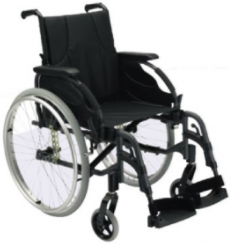Welcome to EachNight’s Side Sleeper Guide! You’re not the only one who falls asleep on your side every night. One of the most popular sleeping positions, chosen by millions worldwide, is side sleeping. It’s important to realize, though, that how you lay down when you sleep can greatly impact both the quality of your sleep and general health.
Whether you’ve always slept on your side or are just trying out this sleeping position, our in-depth guide offers helpful insights, professional advice, and product recommendations to ensure you wake up rested and ready to face the day. Let’s explore side sleeping and learn how to get the most out of your sleep for a better night’s rest.
The Benefits of Side Sleeping
Before we get started with the advice, let’s briefly discuss the benefits of side sleeping. First and foremost, side sleeping can help minimize snoring and the chance of developing sleep apnea, making it a great option for people who have trouble breathing while they’re asleep. Furthermore, lying on your side encourages better digestion by preventing the pressure of your stomach’s contents on your esophagus.
Additionally, pregnant women may benefit from sleeping on their sides. Because it increases blood flow to the fetus and prevents the uterus from resting on the liver, sleeping on the left side is especially advised during pregnancy and lowers the risk of difficulties.
Choosing the Right Pillow and Mattress
Choosing the appropriate mattress and pillow is one of the most important considerations for side sleepers. Your mattress should cushion the pressure areas while still providing sufficient support to maintain the alignment of your spine. Because it provides a nice blend of comfort and support, a medium to medium-firm mattress is frequently the best choice for side sleepers.
Choose a cushion that will maintain your neck and head in alignment with your spine. Neck pain and discomfort might result from an excessively high or flat pillow. Choose a pillow that completely fills the area between your head and the mattress to ensure a restful night’s sleep.
Positioning Yourself for Comfort
Even while sleeping on your side is generally advantageous, keeping the right position is crucial. Follow these postural recommendations to prevent neck or shoulder aches in the morning:
- Hug a Pillow: Place a cushion between your knees and ankles to keep your hips and pelvis straight and lessen the tension on your lower back.
- Keep Your Neck Aligned: Make sure your pillow supports your head and neck in a neutral posture so that your spine remains straight from your head to your neck.
- Refrain from Tucking Your Chin: Tucking your chin into your chest might strain your neck and cause discomfort.
- Change Sides: If you often sleep on one side, try switching sides occasionally to prevent pressure from building up on one side of your body.
Taking Care of Pressure Points
Pressure points, especially those near the shoulders and hips, may be felt by side sleepers. Consider utilizing a mattress topper or memory foam pad to solve this problem. These modifications can offer greater padding and effectively distribute your body weight, lowering the possibility that you’ll wake up with sore joints.
Pregnancy and Side Sleeping
As was previously noted, side sleeping is frequently advised during pregnancy, particularly on the left side. The placenta receives better blood flow in this position, which can also lessen the risk of leg edema. Consider utilizing a body pillow for added support and to reduce pressure on your back to improve comfort during pregnancy.
Managing Sleep Apnea and Snoring
Certain lifestyle adjustments can significantly improve your sleep quality if you are a side sleeper who struggles with snoring or sleep apnea. Snoring can be prevented by forgoing big meals and alcohol before bed. Additionally, utilizing pillows or an adjustable bed to raise your head slightly may aid in keeping your airways open while you sleep.
Regular stretching and exercise
Frequent exercise and stretching might enhance your sleep quality as a side sleeper. Include stretching and strengthening exercises for your core muscles, which can improve posture and lessen the likelihood of night-time discomfort.
Conclusion
The great sleep posture of lying on one’s side has several advantages, including less snoring, improved digestion, and assistance for pregnancy. You may get the most out of side sleeping for an uninterrupted night’s sleep by choosing the ideal mattress and pillow, maintaining good sleeping posture, and alleviating pressure spots.
Always keep your needs and preferences in mind while designing a sleeping environment to improve your sleep quality. Sweet dreams are in store as you set out on your quest for better sleep as a side sleeper.







